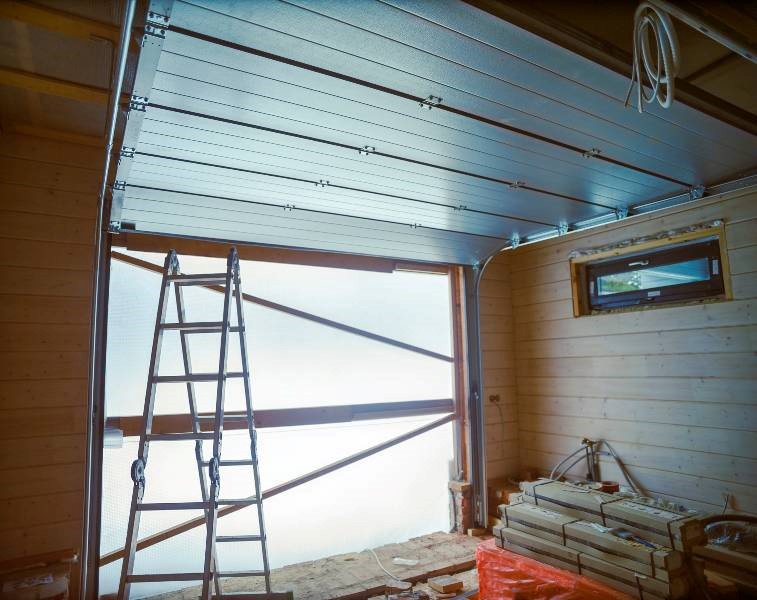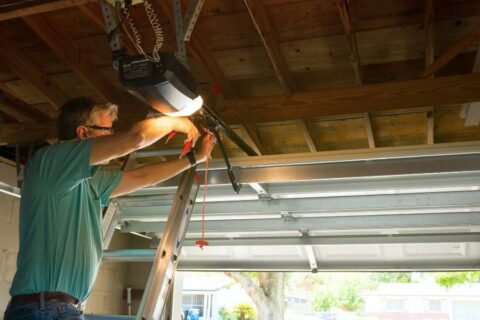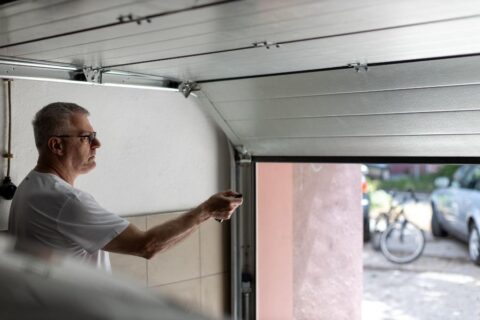The Effective Steps to Maintain Your Garage Door for Smooth Operation
Your garage door opens and closes thousands of times a year. How often do you stop to take care of it? Regular maintenance keeps your garage door running smoothly, prevents costly repairs, and extends its lifespan. Follow this garage door maintenance checklist to ensure long-lasting efficiency and safety.

1. Pay Attention to Noises and Movements
A well-maintained door operates quietly and moves smoothly. If you notice grinding, squeaking, or jerky movements, a problem is likely developing.
Take a few minutes each month to watch and listen as the door opens and closes. If something seems off, investigate further to avoid a bigger, more expensive repair.
2. Tighten Bolts and Screws
The vibration from opening and closing the garage door gradually loosens screws, bolts, and brackets. Loose hardware can lead to misalignment or cause the door to come off its track.
Occasionally examine the bolts and screws connected to the track system, hinges, and roller brackets. If anything is loose, tighten it with a wrench as part of your garage door upkeep for durability.
3. Lubricate Moving Parts
Without lubrication, garage door components grind against each other, causing unnecessary wear and tear. Greasing everything properly ensures smooth operation.
Apply a silicone- or lithium-based lubricant to the rollers, hinges, and springs twice a year. Avoid using heavy grease, which attracts dirt and creates buildup.
4. Test the Door’s Balance
An unbalanced garage door forces the opener to work harder. It might not open or close correctly, which increases wear and tear and may become a safety issue.
For this garage door maintenance tip, disconnect the automatic opener and manually lift the door halfway. If it stays in place, the balance is good. If it moves up or down on its own, the springs may need adjustment.
5. Replace Worn Weatherstripping
The rubber strip at the bottom of your garage door seals out moisture, dirt, and pests. Over time, cracks, tears, and brittleness reduce its effectiveness.
Inspect the weatherstripping regularly. When you notice damage, replace it with a suitable product from your local hardware store. Simply remove the old stripping and slide the new one into place.
6. Test Safety Features
Garage doors have built-in photoelectric sensors and an auto-reverse mechanism to ensure the door doesn’t close on a person, pet, or object. However, they only work if they’re maintained properly.
To check the sensors, wave an object between them while the door is closing. If they’re working properly, the door will stop and reverse direction. To test the auto-reverse feature, place a solid object, like a chair, in the door’s path but not blocking the sensors. When the door touches it, it should immediately reverse. If either feature fails, clean the sensors and check their alignment. Schedule a professional inspection if problems persist.
7. Keep Tracks Clean and Aligned
Dirt and leaves can accumulate in the garage door tracks, causing rough operation or a stuck door. Misaligned tracks can also stress the system and make the door difficult to open and close.
Smooth operation garage door care involves wiping down the tracks with a damp cloth every few months. Check for gaps or bends in the track alignment. If the door doesn’t move smoothly, schedule a repair.
8. Inspect Rollers and Cables
Garage door rollers and cables help lift and lower the door safely. Over time, rollers may wear down or crack, causing them to roll roughly. Cables can also fray or weaken, which is a serious safety risk.
To maintain garage door performance, inspect the rollers and cables twice a year. If you notice damaged rollers, replace them before they cause further issues. As for cables, never handle them without professional help. If you see corrosion or fraying, call a technician to replace them.
9. Clean the Garage Door
A dirty garage door looks bad and detracts from your home’s curb appeal. Dirt, grime, and salt buildup in the winter can also cause rust, warping, or paint deterioration.
Wash the garage door exterior about twice a year with mild soap and water. Check metal doors for rust spots and sand them down before applying primer and paint. Inspect wooden doors for warping or chipping, and apply a fresh coat of paint or sealant. Regular cleaning is an easy step in garage door longevity maintenance.
10. Schedule Professional Inspections
Even if you know how to maintain a garage door yourself, some issues require professional attention. A trained technician can spot problems before they become major repairs. They can also adjust tension springs, realign tracks, and ensure the opener is working correctly.
Trust Better Built Garages for Expert Maintenance
If you need help maintaining or repairing your garage door, look no further than Better Built Garages. We have served the Chicago area with high-quality craftsmanship and exceptional service since 1956. We don’t just fix garage doors—we build entire garages from the ground up, giving us unmatched experience in the ins and outs of garage door operation. Our A+ BBB rating and glowing reviews show our dedication to quality and customer satisfaction. Contact us today to schedule your next garage door service.


